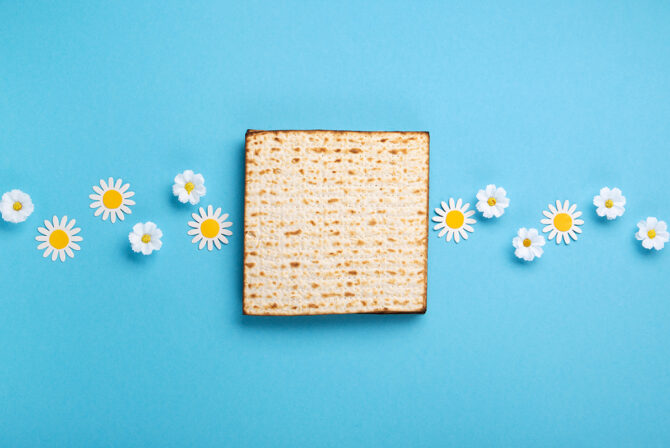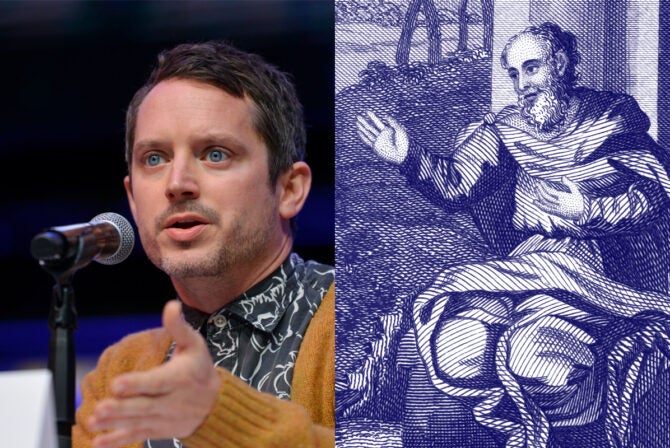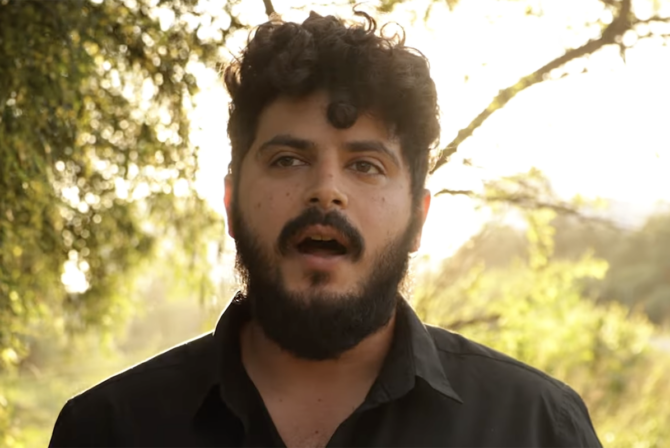Oh, Simchat Torah. You’re the very end of a long holiday season. You’re at the end of Sukkot. You’re after Shemini Atzeret, the holiday almost impossible to define in less than 8 sentences. And you are known colloquially as “the holiday about the Torah.” That’s not doing you justice.
Simchat Torah marks the end of a full cycle of reading the Torah in the Jewish year. It is a religious yom tov (holiday) that is celebrated by dancing with the Torah in synagogue. The dancing is done in circles or hakafot, and the seven hakafot we participate in each feature songs, chants, and, quite often, increasing levels of a mystical power.
As a child, I attended a large Reform synagogue on Hollywood Boulevard, and they used to hire cops to shut down the street so that we could literally dance in the street. We received small Torahs, and since I was a giant nerd who loved Israeli folk dancing, I especially loved this holiday.
Now that I am a mom of two young boys and now that I have taken on more observance, Simchat Torah has religious implications to be considered in accordance with the
halacha
(Jewish law) I seek to hold to. And it’s also upon me to find ways to teach the significance of a holiday to my sons. It’s not easy to teach about the Torah in language I find appropriate for a 3- and 6-year-old, but here’s what I’ve got:
1) The Torah is Wise. Not all old things are wise, but the Torah is old and it is very wise. It has all of the instructions we need to figure out how to have families, how to be happy, and how to deal with problems in our family and our world. The Torah was written a long, long time ago, but that doesn’t mean it can’t help us understand our lives now. That’s what it means for something to be really wise. It applies to people over thousands and thousands of years.
2) The Torah is Divine. Without getting too far into the details of my personal theology, our sons know that there is something called HaShem (God). It’s not a person, but it has power. HaShem is in every single thing we do, see, feel, hear, taste, and know. HaShem is in our bodies and our hearts and HaShem is in charge of the world in ways we can’t even understand or imagine. HaShem “wrote” the Torah, not with hands (because HaShem has no hands), but by teaching and inspiring and talking to people thousands of years ago, especially Moses who was super in touch with HaShem. The Torah is incredibly special because HaShem made it all happen.
3) The Torah is Precious. When the aron hakodesh (ark that holds the Torah) is opened in synagogue, we stand up right away to show respect. That’s the way we show how special the Torah is. We should feel like we are seeing a flower opening up or like a newborn baby is smiling at us every time we look at the Torah. We can’t be rough with it, and we don’t want anyone to be mean to it or touch it with their toddler jam hands, and for sure we don’t want to drop it. (“How many days do you have to fast if you drop it, Mama?” my older son likes to ask. “600 years?” “Not quite, Miles, but we really don’t want to drop it nonetheless.” ) We kiss the Torah because it is a special thing we love and feel very, very close to it. There is nothing like the Torah, nothing we hold quite so special and precious. It’s like the best present ever.
We did a little arts and crafts project recently to make our own tiny Torahs:
-String a piece of 2 or 3 inch wide paper (as long as you want) between two toothpicks with scotch tape. We like to do this with fancy cocktail-style toothpicks so it looks like wooden handles or finials on the Torah, and I use grainy paper so it looks like parchment.
-Roll it up and tie it with a pretty ribbon or even just a rubber band. I had an old maroon velvet tablecloth in the house that I poked two holes in for the finials to stick through, and voila: Torah cover.
-On the parchment, we write our sons’ names in Hebrew.
“This is your Torah,” I tell them.
And it’s true.
The wisdom, Divinity, and preciousness of the whole Jewish people is in the Torah and we can access it any time we want to.
This is our Torah. Chag Sameach!







